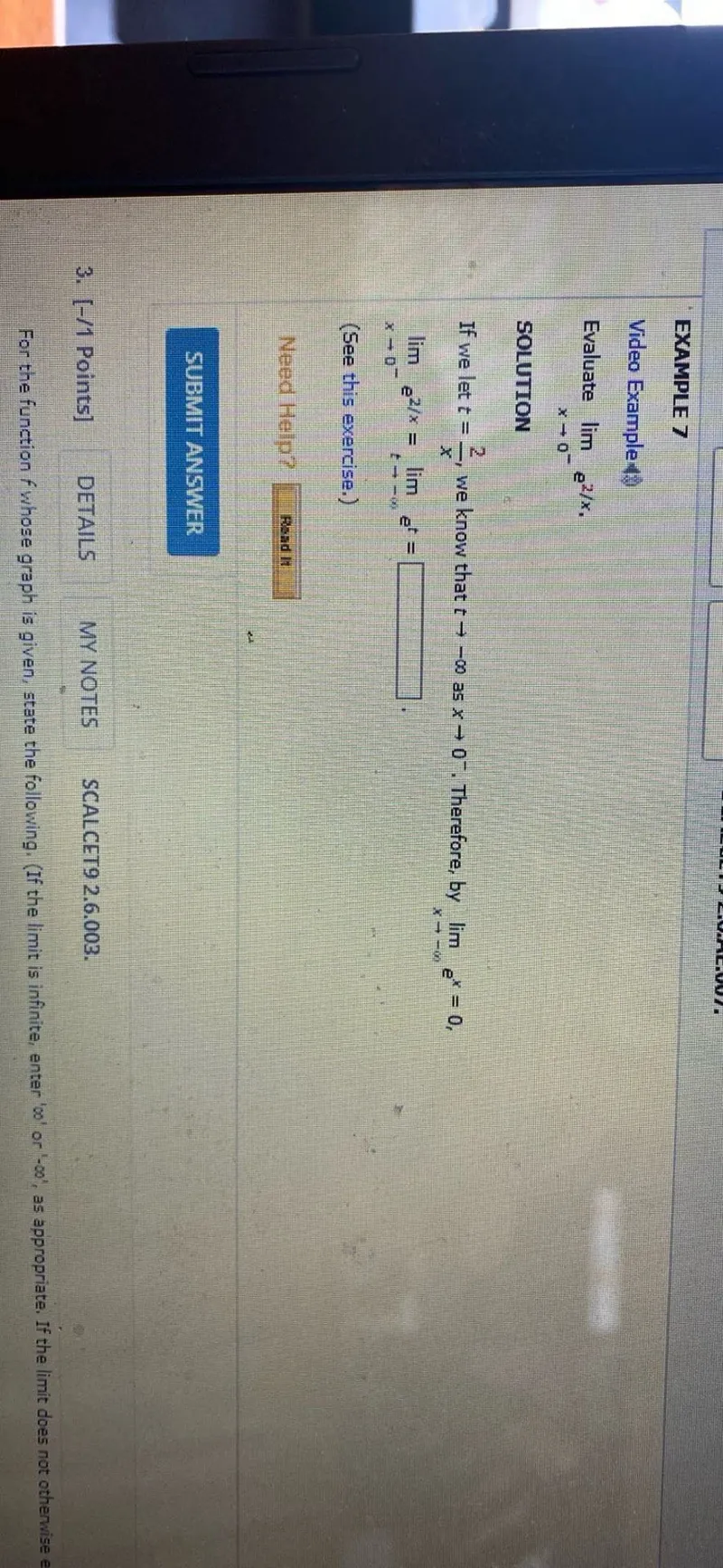Questions: Evaluate the limit as x approaches 0 from the left of e^(2 / x). If we let t = 2/x, we know that t approaches negative infinity as x approaches 0 from the left. Therefore, by the limit as x approaches negative infinity of e^x = 0, the limit as x approaches 0 from the left of e^(2 / x) = the limit as t approaches negative infinity of e^t = 0

Transcript text: Evaluate $\lim _{x \rightarrow 0^{-}} e^{2 / x}$
If we let $t=\frac{2}{x}$, we know that $t \rightarrow-\infty$ as $x \rightarrow 0^{-}$. Therefore, by $\lim _{x \rightarrow-\infty} e^{x}=0$,
\[
\lim _{x \rightarrow 0^{-}} e^{2 / x}=\lim _{t \rightarrow-\infty} e^{t}=\square
\]





